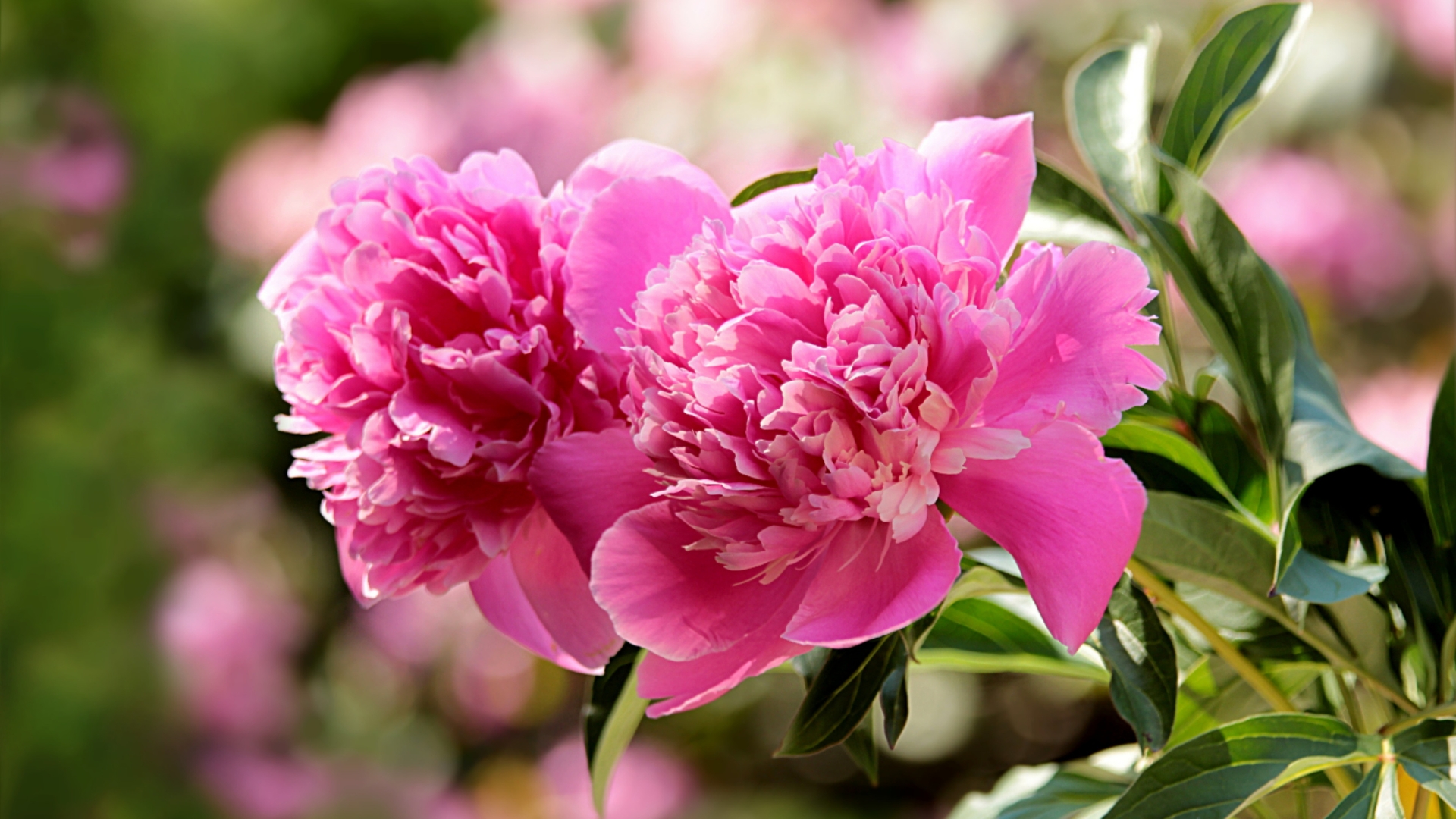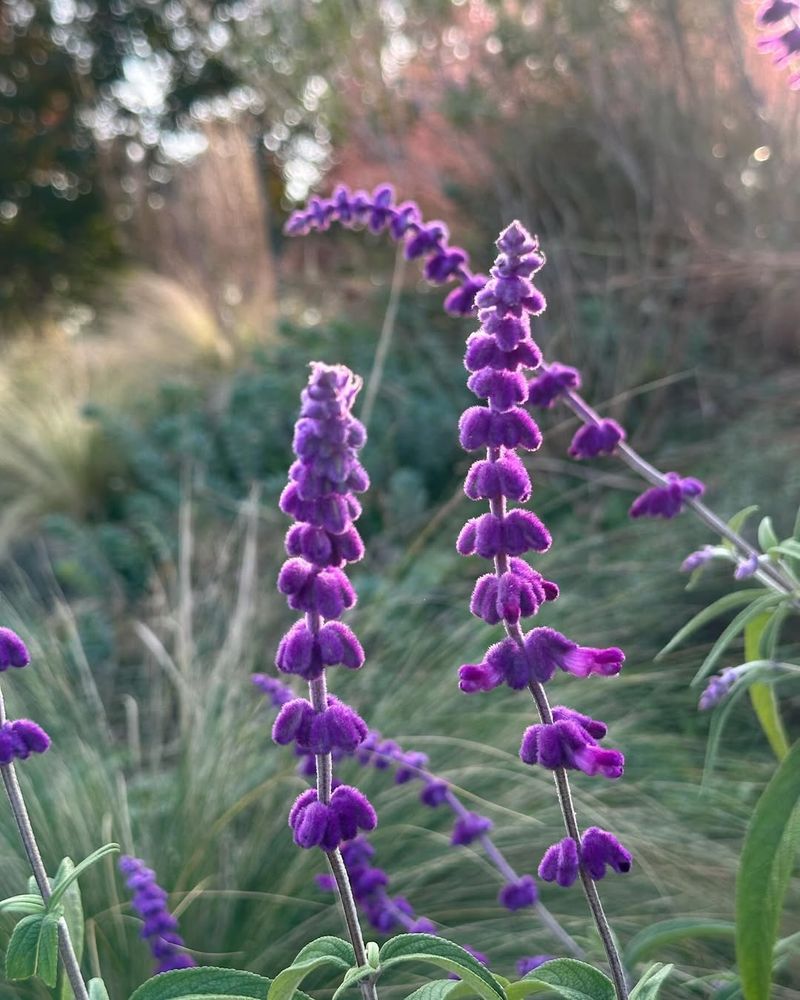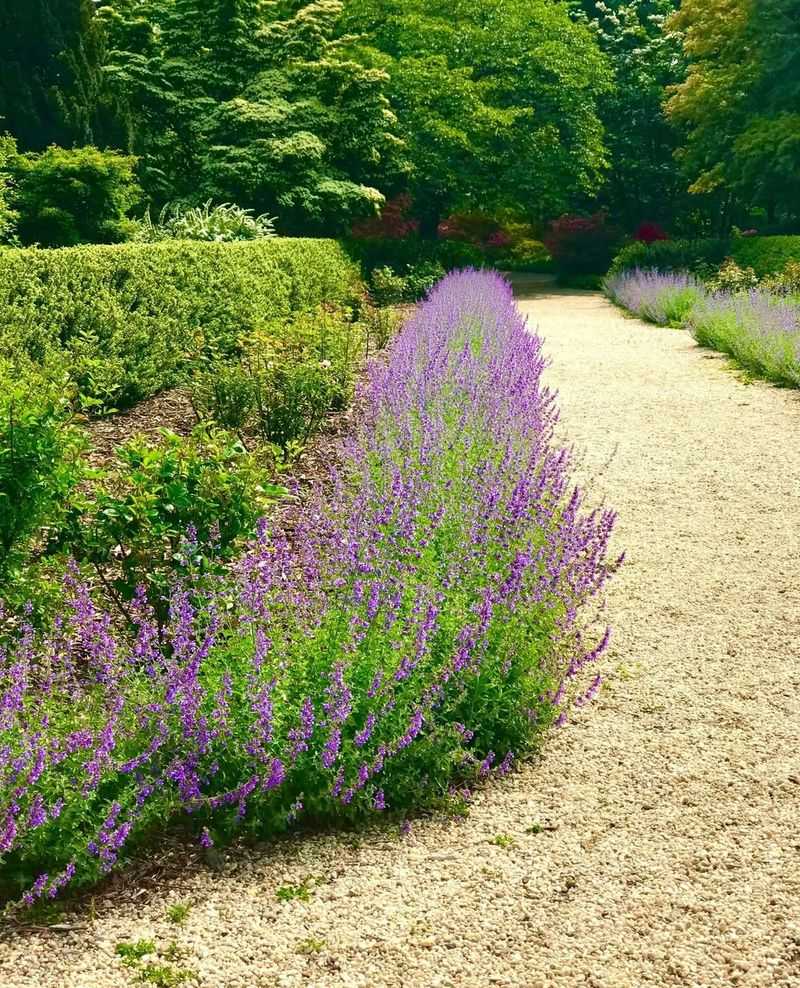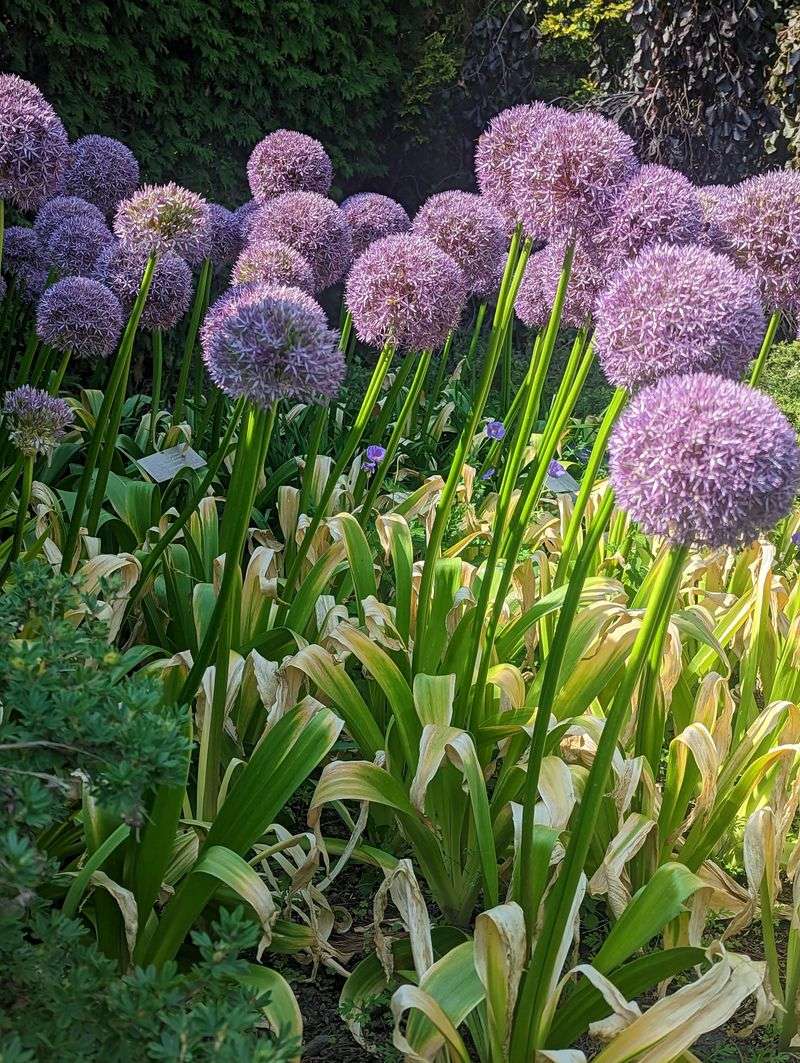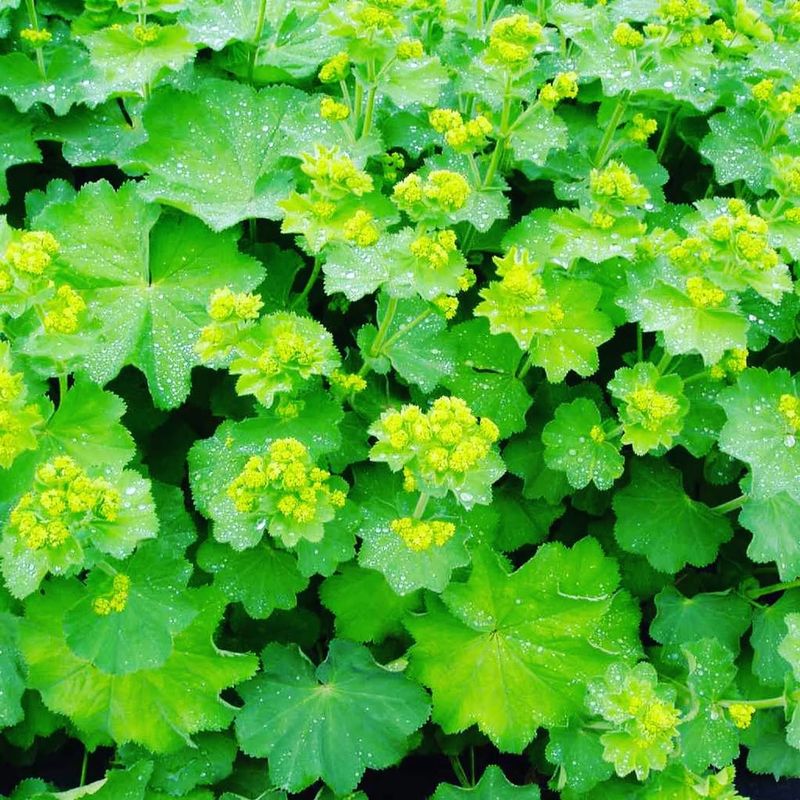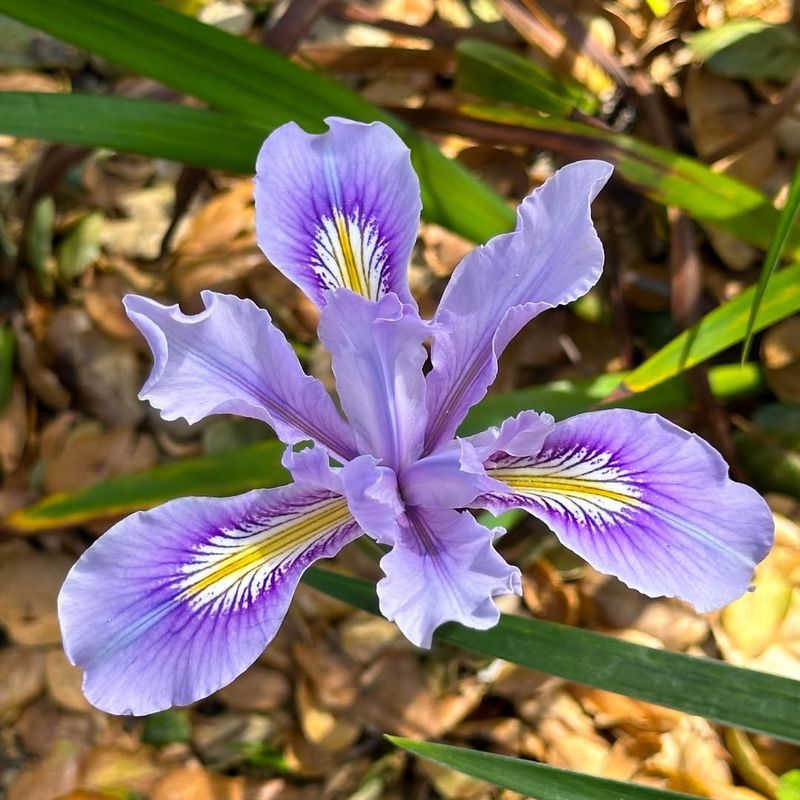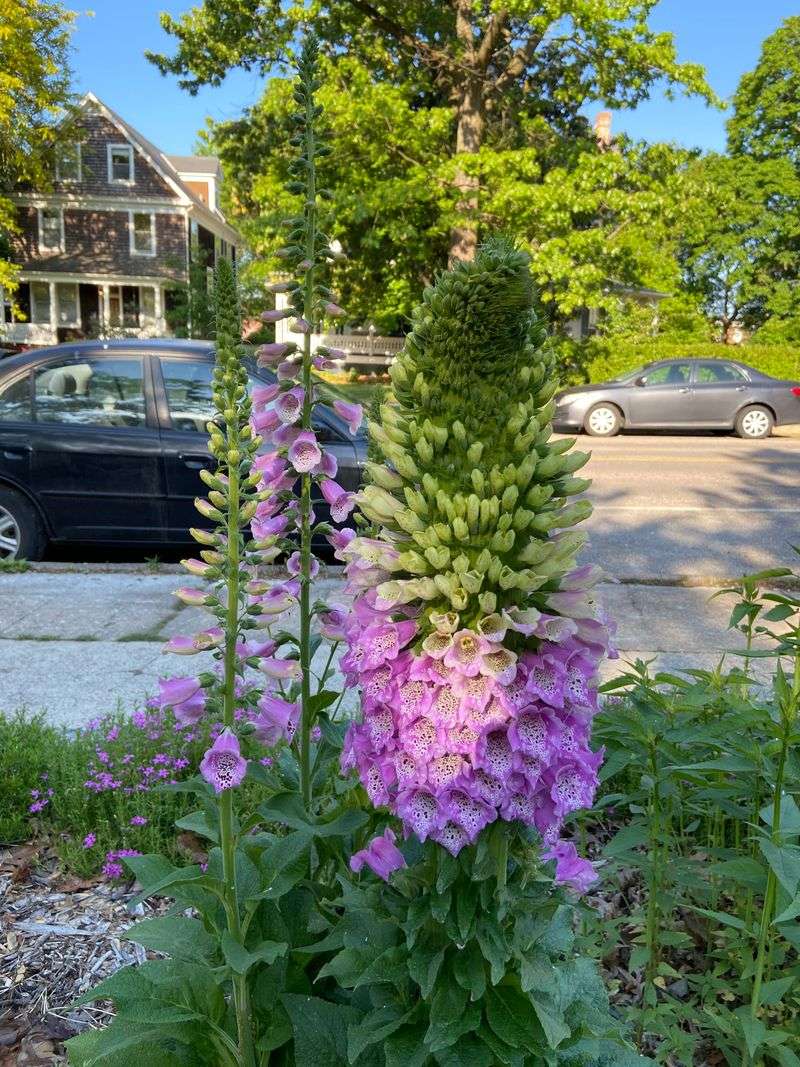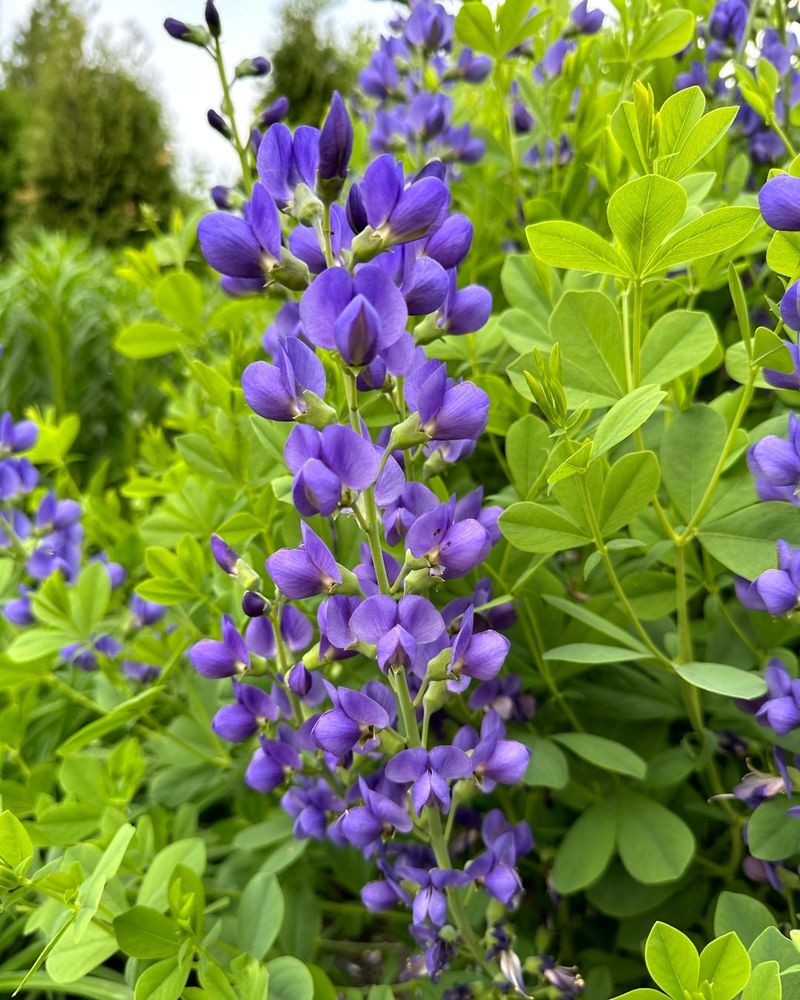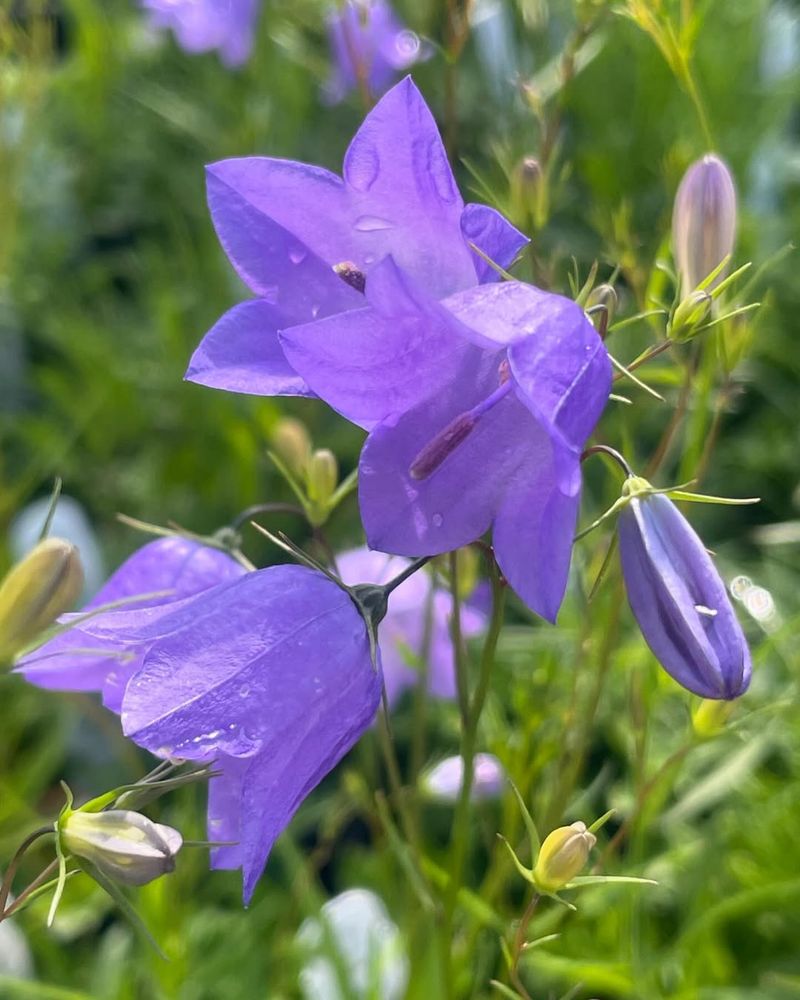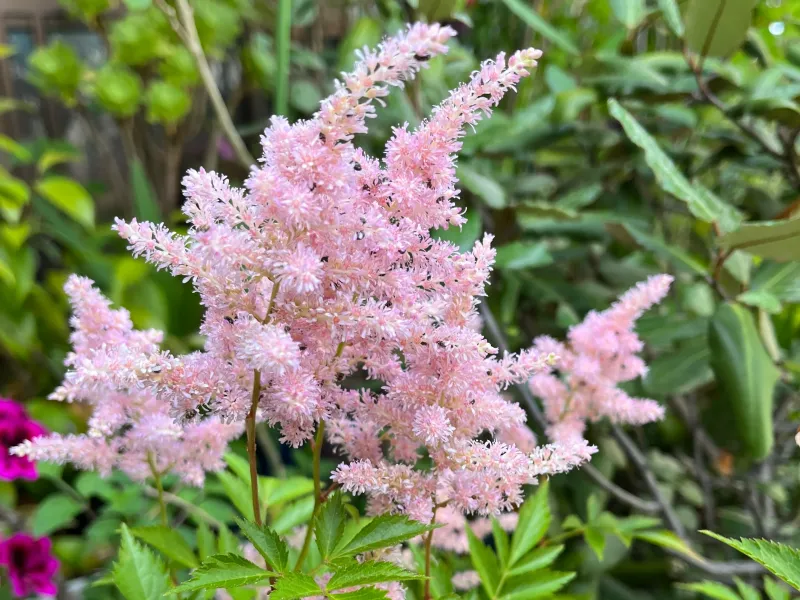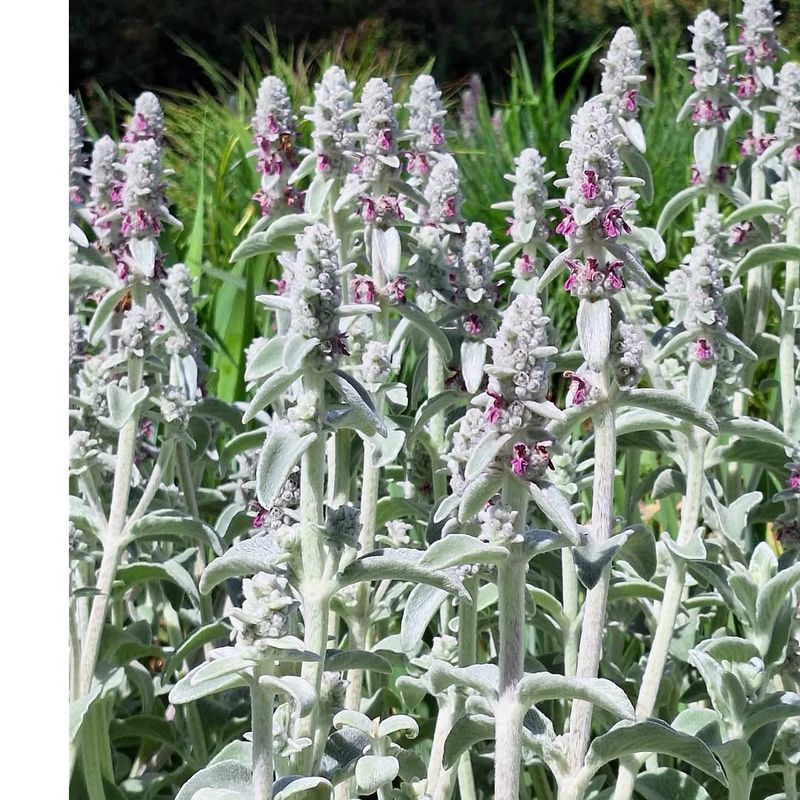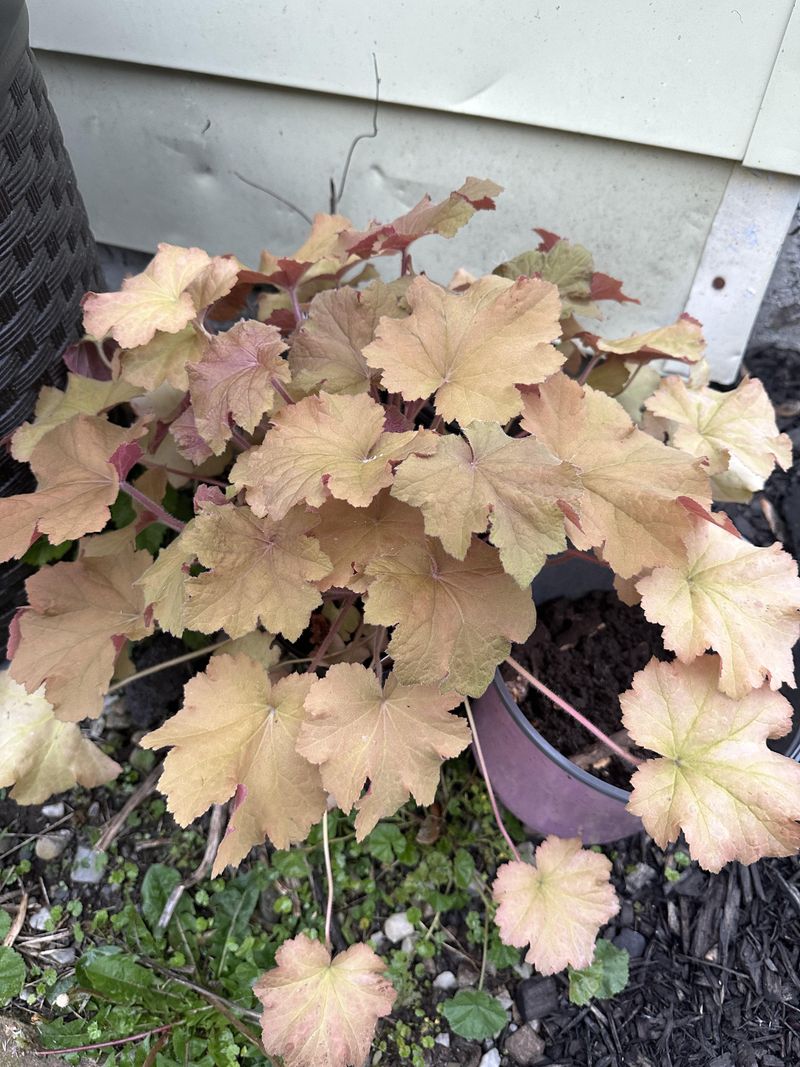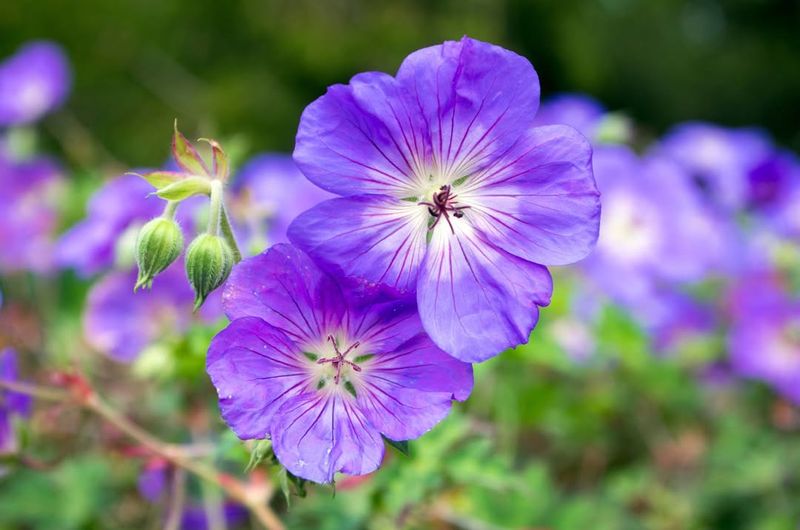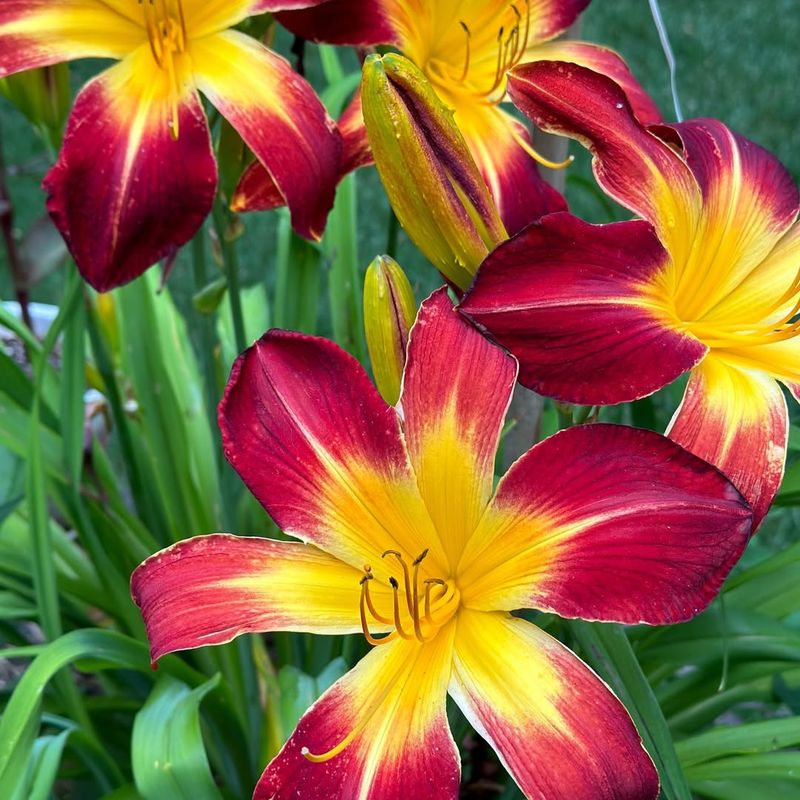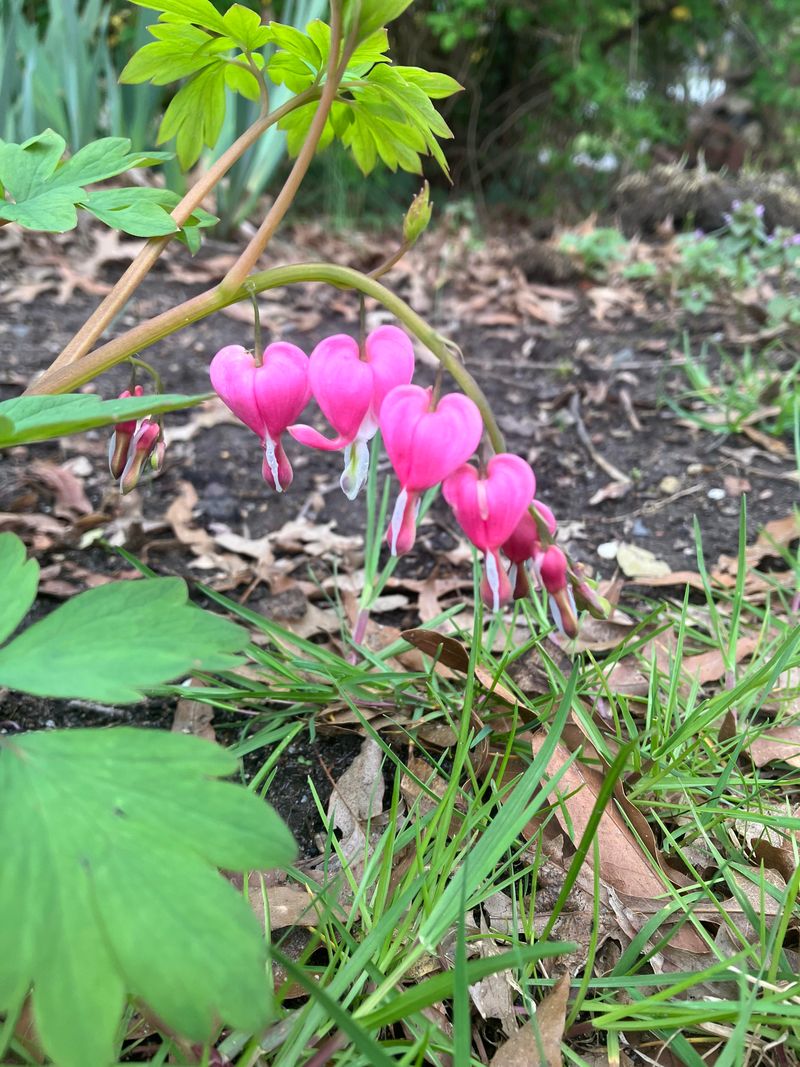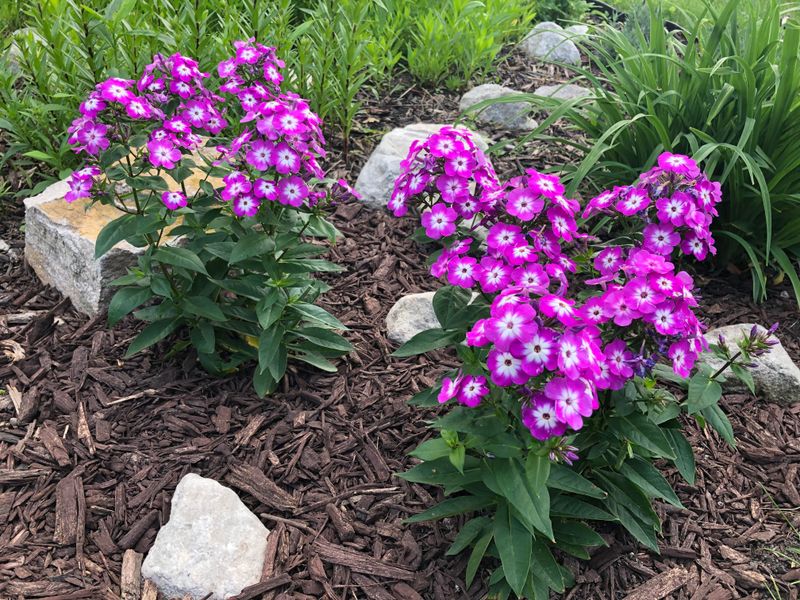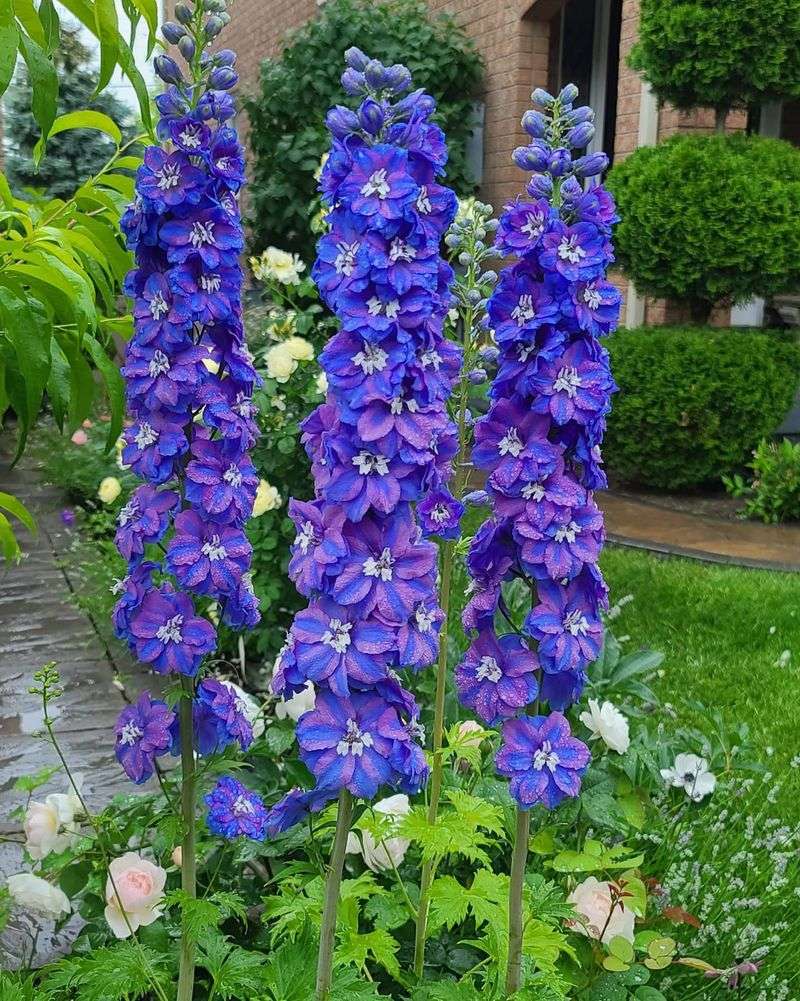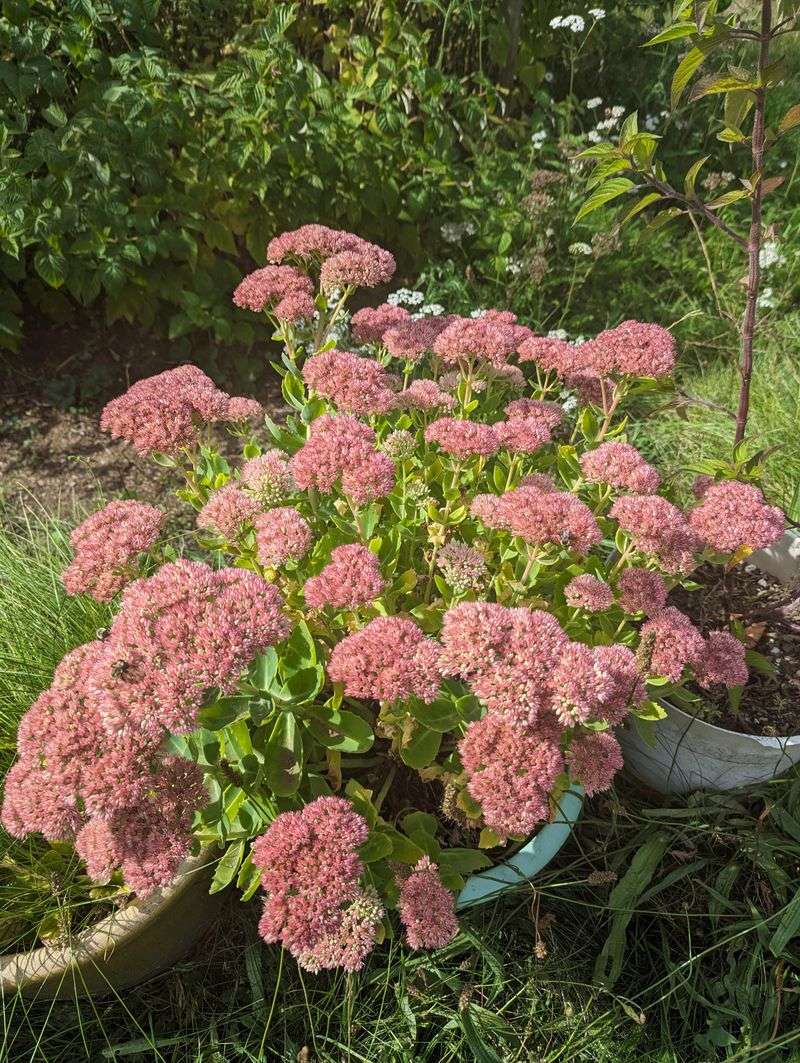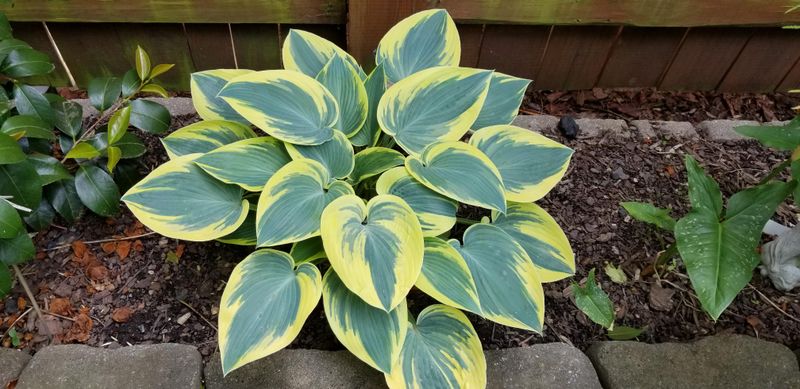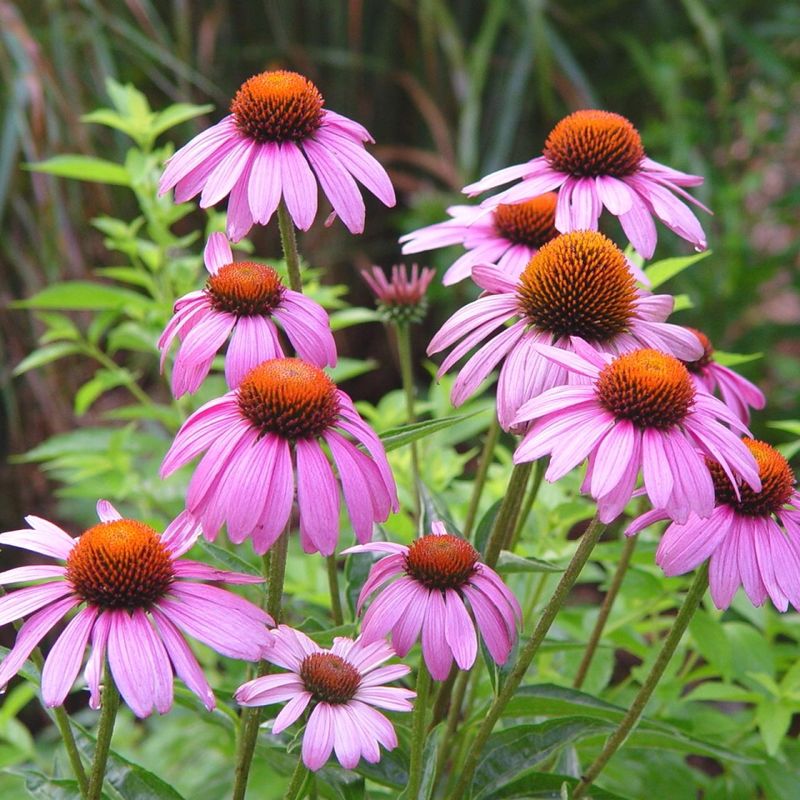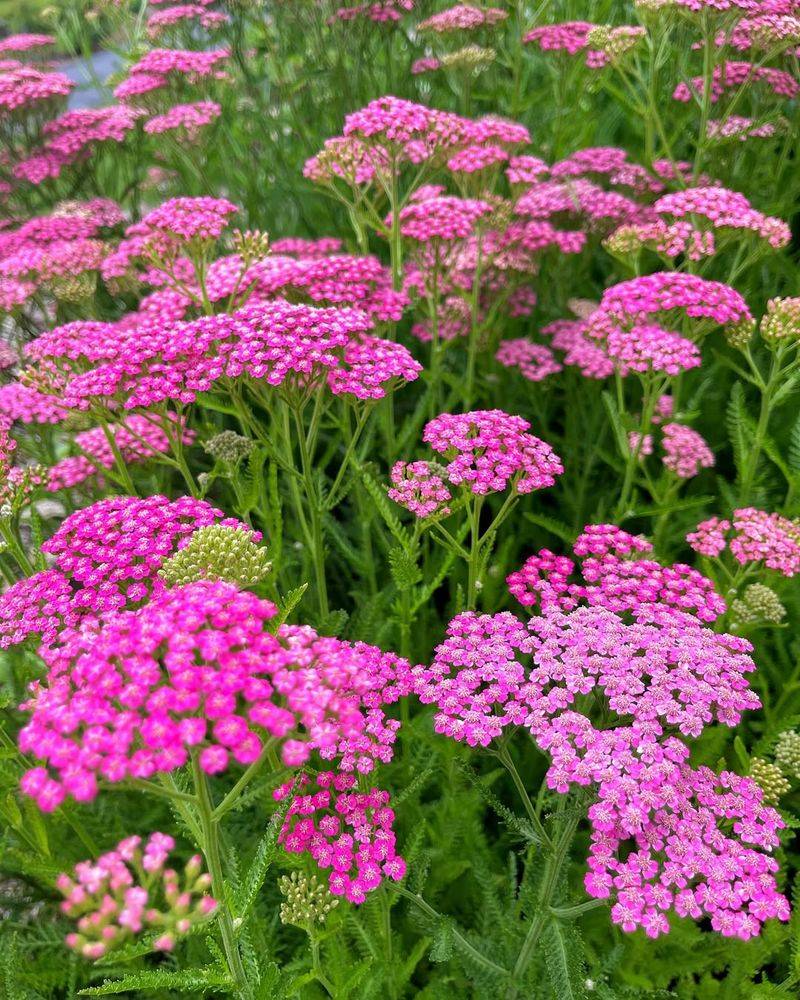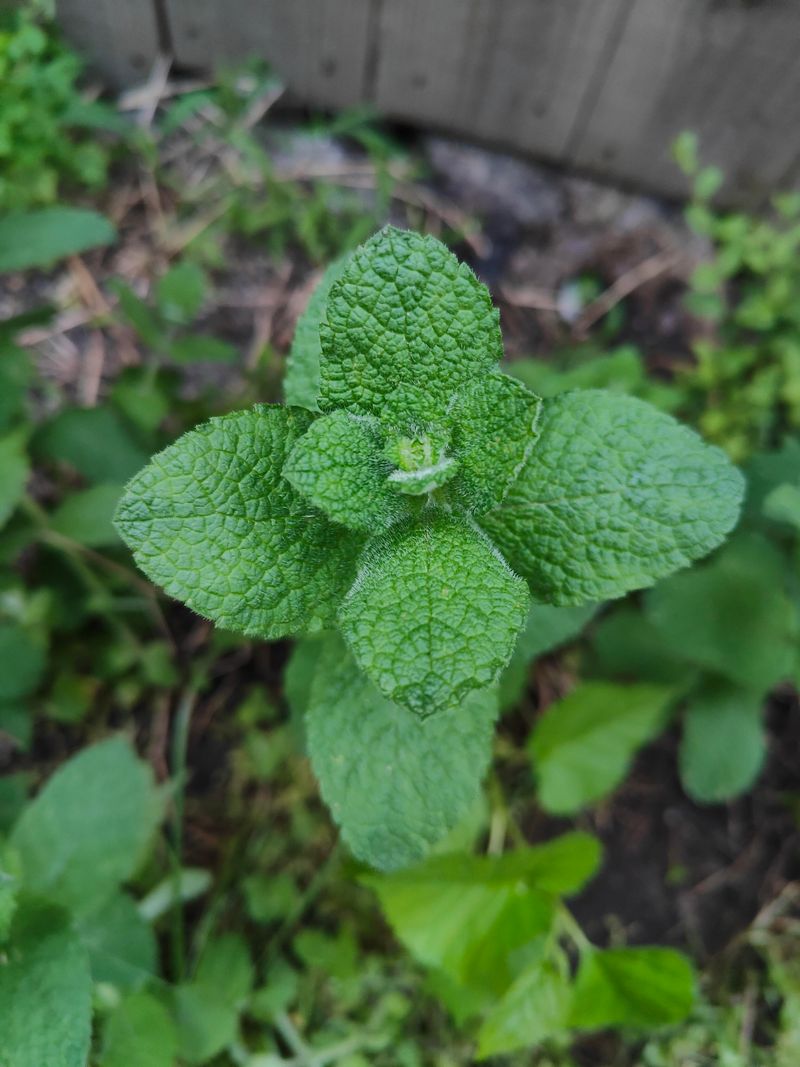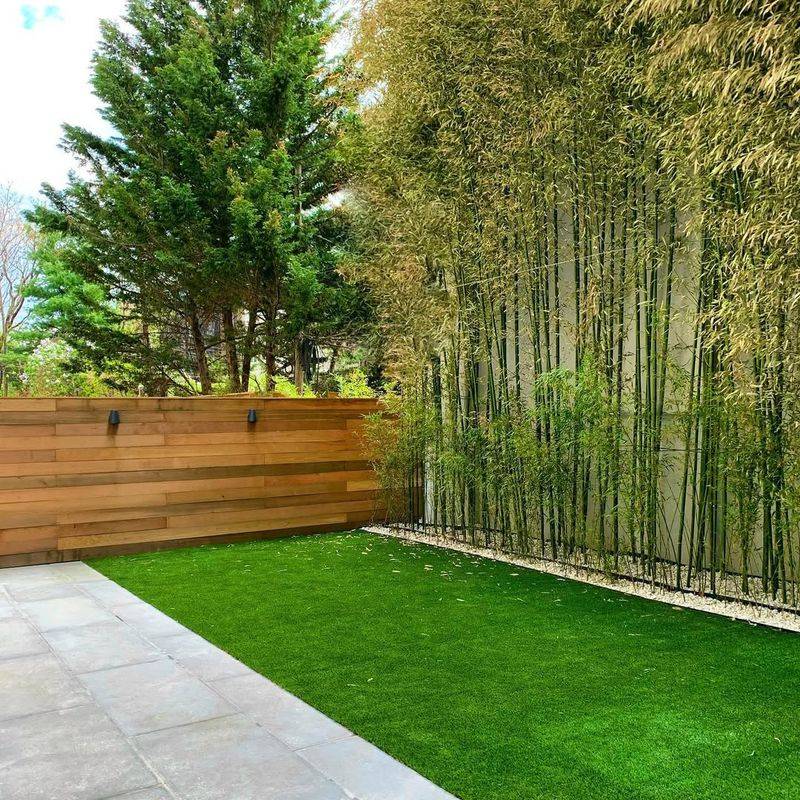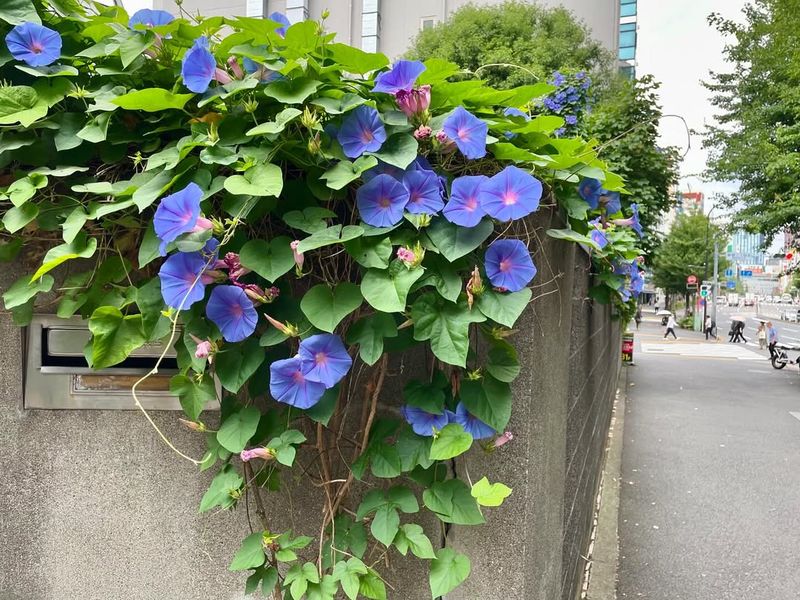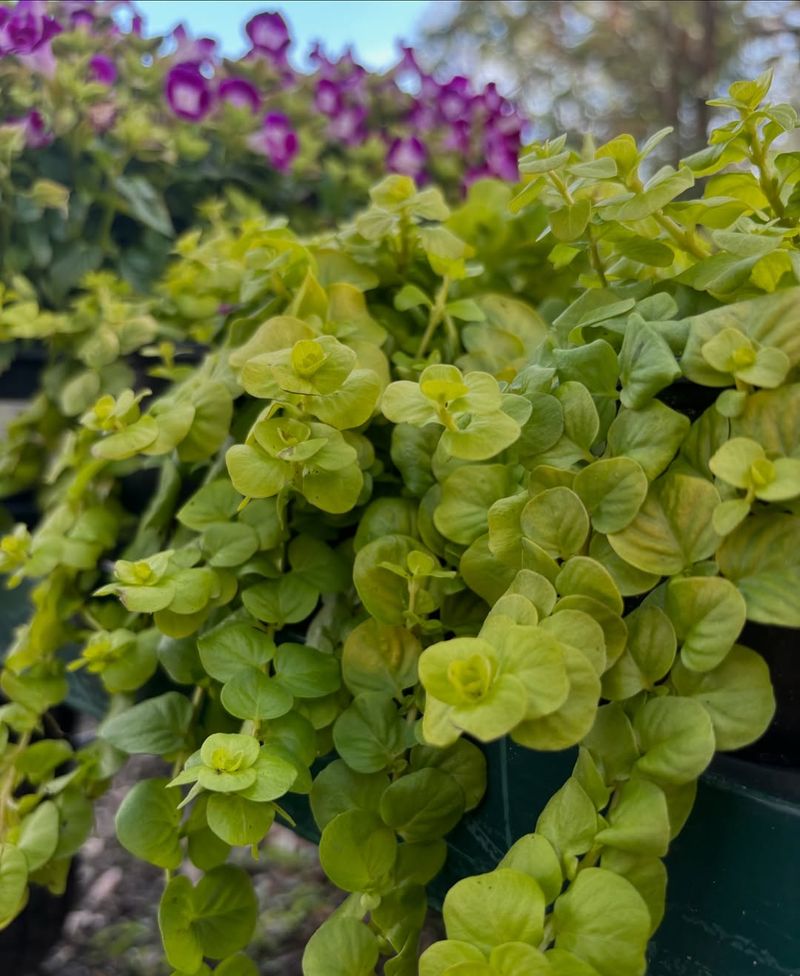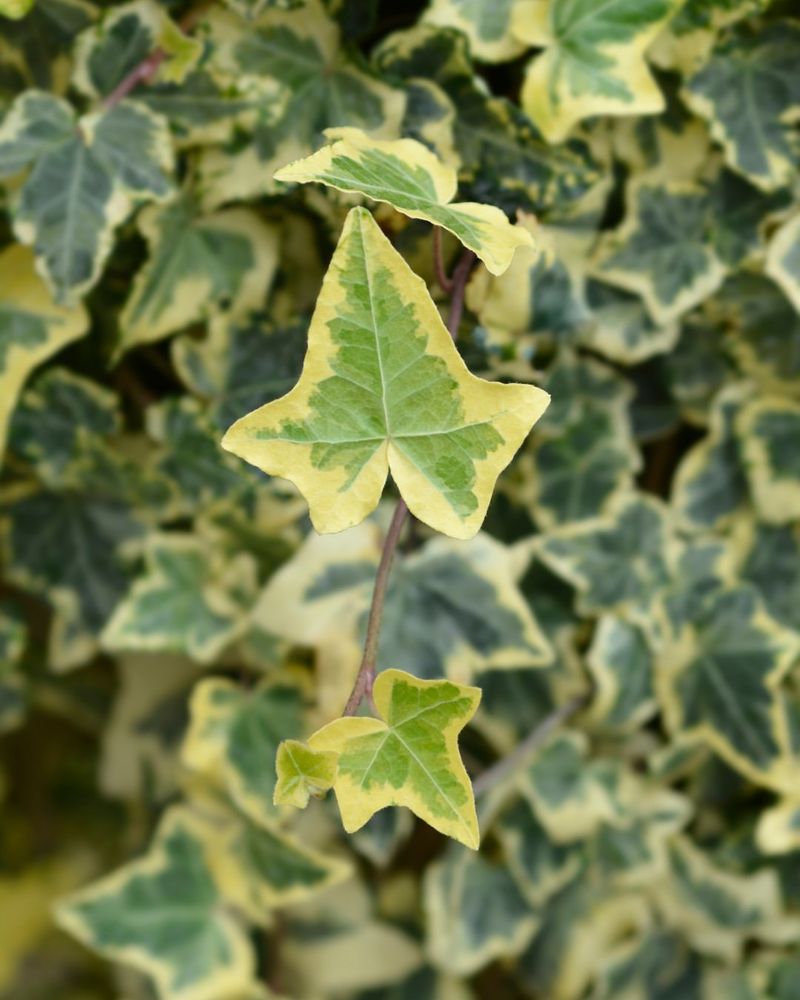Gardening isn’t just about planting; it’s about creating a harmonious dance of colors, textures, and scents. In this journey, peonies take center stage, captivating with their lush blooms and intoxicating fragrance. Yet, the true magic unfolds when you pair them with complementary plants that enhance their beauty. Let’s explore a selection of some breathtaking companions for your peony garden (and some that won’t work). Each plant brings its own charm, turning your garden into a vivid tapestry of nature’s wonders. From vibrant heights to delicate ground covers, these plants promise an enchanting garden experience.
1. Salvia
Salvia’s spiky blooms and silvery foliage offer a stunning contrast to the rounded, lush flowers of peonies. The deep purples and blues play beautifully against soft pinks and whites.
Their vertical structure also adds height variation, making your garden feel more layered and intentional. Salvia is a magnet for pollinators, bringing bees and butterflies to your peony patch.
It thrives in full sun with well-drained soil and blooms reliably all summer long. Once established, it’s drought-tolerant and low maintenance.
Deadhead regularly to encourage reblooming. Salvia’s upright charm is the perfect foil for peonies’ softness.
2. Catmint (Nepeta)
Catmint brings a soft, lavender haze to the base of peonies, creating a dreamy, romantic look. Its low, spreading shape fills in empty space and suppresses weeds.
The color harmony between catmint’s blooms and peonies is effortlessly elegant. Plus, its aromatic foliage helps deter pests that may bother your peonies.
Catmint loves full sun and tolerates dry conditions, making it easy to grow alongside peonies. Shear it back after the first bloom for a fresh flush.
It’s a garden staple that brings both beauty and resilience. Catmint keeps the bed buzzing with pollinators and charm.
3. Allium
Alliums add architectural drama to the garden with their tall, globe-shaped blooms. Their late-spring flower heads rise like lollipops above surrounding foliage.
Planted behind or between peonies, they bring playful contrast in shape and bloom time. Alliums bloom just before or with early peonies, bridging the seasonal gap.
They also repel rodents and pests, which helps protect your peony roots. Alliums prefer full sun and well-draining soil, and they naturalize well in borders.
Once planted, they require very little attention. Their bold forms create an unforgettable garden moment.
4. Lady’s Mantle (Alchemilla mollis)
Lady’s Mantle offers soft mounds of scalloped, velvety foliage that catch raindrops like jewels. In early summer, its airy chartreuse flowers complement peonies in the loveliest way.
It’s a classic pairing—the frothy texture of Lady’s Mantle against the plushness of peonies feels timeless. Use it to edge borders or soften pathways.
This plant thrives in partial shade to full sun and appreciates moist, well-drained soil. It can handle cooler climates and reseeds easily if allowed.
Cut it back after flowering for a tidy look. It’s a graceful companion that makes peonies look even more luxurious.
5. Iris
Iris offers elegant, sword-like foliage and exotic blooms that bloom just before peonies burst into full glory. Their staggered bloom times create a seamless transition in your spring garden.
The vertical lines of iris leaves also provide structure before and after bloom. Together, they form a duo of drama and grace.
Irises thrive in full sun and need good drainage—perfect for the same conditions peonies love. Divide them every few years to keep them blooming strong.
With so many colors to choose from, it’s easy to coordinate or contrast with peonies. Iris brings elegance and rhythm to any peony border.
6. Foxglove (Digitalis)
Foxglove towers gracefully over peonies with its tall, tubular blooms. The vertical height and soft pastel colors create a cottage garden look that’s hard to beat.
It contrasts beautifully with the rounded form of peonies, drawing the eye upward and adding drama. Foxglove’s speckled throats bring a touch of wild charm.
It prefers partial shade and moist, well-drained soil, thriving especially well at the back of borders. Be cautious—this plant is toxic if ingested, so keep it away from curious pets or kids.
Let it self-seed or collect seeds for future planting. With foxglove, your peony garden gets an instant dose of elegance and vintage appeal.
7. Baptisia
Baptisia, or false indigo, produces spiky flower clusters that bloom around the same time as peonies. Its foliage remains lush and full even after blooming, keeping your garden looking tidy.
Its cool blue or purple blooms contrast beautifully with the warmth of pink or coral peonies. As a bonus, it’s drought-tolerant and thrives on neglect.
Baptisia loves full sun and well-drained soil, and once established, it becomes a long-lived garden anchor. It’s also deer-resistant and rarely troubled by pests.
Cut it back only after it’s completely finished flowering. Baptisia brings quiet strength and subtle color to peony beds.
8. Campanula
Campanula, or bellflower, adds soft, bell-shaped blooms that spill gracefully between peony stems. Its gentle shades of lavender, blue, or white keep the palette romantic and cool.
Campanula’s low, clumping habit fills gaps without overwhelming. It blooms around the same time or just after peonies, keeping the show going.
This perennial enjoys full sun to part shade and appreciates regular moisture. Deadhead for prolonged flowering and tidy growth.
It’s charming, low-key, and the perfect ground-hugging complement. Campanula’s whimsical blooms bring balance and softness to bold peonies.
9. Astilbe
Astilbe offers feathery plumes that rise like fireworks over delicate foliage. Its blooms often come just as peonies are fading, extending the bloom party in style.
The combination of peonies’ bold petals and astilbe’s airy spikes creates dynamic texture. Astilbe thrives in partial shade with consistently moist soil.
It’s perfect for areas where peonies get a bit of afternoon relief. Choose white, pink, or red astilbes to blend beautifully with your peony palette.
Water during dry spells to keep foliage lush. It’s a textural match made in garden heaven.
10. Lamb’s Ear (Stachys byzantina)
Lamb’s Ear brings soft, silvery leaves that provide a striking contrast to peony’s bold colors. Its velvety texture adds a tactile element that softens the border.
The low-spreading form of Lamb’s Ear makes it a perfect edging plant. It thrives in full sun and dry, well-drained soil—ideal alongside mature peonies.
Be sure to divide clumps to keep them from becoming overcrowded. While its blooms are subtle, the foliage steals the show.
It’s hardy, low-maintenance, and keeps the garden interesting even after peonies fade. A cool-toned, calming accent in a vibrant space.
11. Coral Bells (Heuchera)
Coral Bells offer stunning foliage in shades of burgundy, chartreuse, or silver that complement peonies long after their blooms are gone. Their delicate flower spikes add soft vertical accents without stealing the show.
Planted at the base of peonies, they fill in space with bold leaves and balanced form. Coral Bells thrive in partial shade but can handle morning sun with adequate moisture.
They prefer well-draining soil and reward you with multi-season appeal. Deadhead to tidy up or let them self-seed for natural beauty.
Heuchera makes peonies pop while carrying visual interest through the rest of the season. It’s color, contrast, and reliability in one tidy package.
12. Hardy Geranium
Hardy geraniums, or cranesbill, offer a profusion of soft, saucer-shaped blooms that dance around peonies like a floral border. Their delicate form and sprawling growth habit soften the edges of peony beds.
Most varieties bloom right as peonies are at their peak, providing great timing for maximum impact. Hardy geraniums thrive in full sun to part shade and adapt well to most soils.
They’re low-maintenance, deer-resistant, and perfect for weaving between perennials. Cut them back after flowering to encourage reblooming and fresh foliage.
It’s a classic pairing that’s easy to love. Cranesbill gives peonies a cottage garden flair with very little fuss.
13. Daylily (Hemerocallis)
Daylilies bloom just after peonies, picking up where they leave off with bright, trumpet-shaped flowers. Their strappy foliage fills space and provides structure through summer.
They come in a rainbow of colors, offering endless opportunities to coordinate or contrast with your peonies. Daylilies thrive in full sun and well-drained soil, with very little maintenance.
Divide clumps every few years to keep them blooming strong. They’re tough, dependable, and bounce back from drought like pros.
Together, peonies and daylilies bring early and mid-summer magic. This duo keeps your garden glowing for weeks on end.
14. Lavender
Lavender’s soft purple flowers and silvery stems are a beautiful, fragrant contrast to lush peony blooms. It brings calm, movement, and pollinators to the garden.
Lavender’s low, mounding shape fits naturally at the feet of taller peony plants. It thrives in full sun and dry, lean soil—perfect for the front of a well-drained border.
Avoid overwatering to keep lavender happy. Prune after blooming to maintain a tidy shape and encourage airflow.
It adds a Mediterranean twist to classic peony beds. Lavender keeps things cool, clean, and buzzing with bees.
15. Bleeding Heart (Dicentra)
Bleeding Heart adds a touch of whimsy with its delicate, heart-shaped blooms and arching stems. It thrives in partial to full shade, making it ideal for balancing sun-loving peonies in mixed borders.
Their bloom times often overlap in spring, creating a moment of fairytale charm. Bleeding Heart prefers moist, rich soil and benefits from mulch to retain moisture.
After blooming, it may go dormant, allowing peonies and later perennials to shine. Give it space to fade gracefully without leaving a gap.
It’s an old-fashioned favorite that pairs beautifully with peony elegance. Together, they create a storybook spring garden.
16. Columbine (Aquilegia)
Columbine brings a whimsical charm with its nodding, spurred flowers and delicate foliage. Its airy presence pairs well with the full, heavy blooms of peonies.
Blooming just before or alongside peonies, it adds movement and softness to the spring garden. Columbine thrives in part shade with moist, well-drained soil.
It self-seeds gently, making it a great option for naturalized beds. Deadhead to extend the bloom season or let the seeds spread for a cottage garden feel.
With its range of colors, columbine complements any peony palette. It’s a sweet, romantic contrast to peonies’ bold drama.
17. Phlox
Phlox offers clusters of star-shaped flowers that keep color going as peony blooms begin to fade. Its taller varieties rise above or mingle with peonies, depending on placement.
Phlox is a pollinator magnet and adds a gentle fragrance to your garden. It thrives in full sun and well-drained, fertile soil.
Cut back after flowering to encourage reblooming or maintain shape. Choose shades that blend or contrast with your peonies—both combinations are striking.
Its cheerful look brings energy to more formal peony plantings. Phlox is a bridge between early summer and full bloom.
18. Delphinium
Delphinium’s tall, elegant spires rise like exclamation points among rounded peony blossoms. Their bold blues and purples create a stunning visual duet with softer peony tones.
Planted behind peonies, they add height and drama to mixed borders. Delphinium prefers full sun and rich, well-drained soil with regular watering.
Staking may be necessary to support those tall stems during windy spells. Deadhead after blooming for a possible second flush.
It’s a bit high-maintenance but absolutely worth the wow factor. Delphinium turns peony season into a showstopper.
19. Sedum
A resilient beauty emerges from rocky terrain, offering structure and form. Sedum, with its succulent leaves and star-like flowers, provides a unique texture to garden compositions.
Thriving in sunny, dry areas, Sedum is perfect for rock gardens and borders. Its fleshy foliage retains moisture, making it drought-tolerant and low maintenance.
As summer progresses, it bursts into bloom, adding color and attracting pollinators. Sedum’s adaptability means it can thrive where other plants struggle, making it a practical yet beautiful companion for peonies.
20. Hosta
Hostas are foliage heroes with broad, textured leaves that complement the upright form of peonies. Their shade tolerance makes them ideal under taller companions or trees.
Use them to cover fading peony foliage once the bloom season ends. Hostas thrive in moist, well-drained soil and dappled shade.
They come in endless sizes, shapes, and colors—perfect for mixing and matching. Water regularly during dry spells for best growth.
Hostas bring structure and calm to peony beds. They’re a reliable, graceful garden anchor.
21. Coneflower (Echinacea)
Coneflowers bring bold color and sturdy form to the garden, offering a summer follow-up to spring peonies. Their daisy-like blooms stand tall and proud, echoing peonies’ elegance in a more relaxed way.
They bloom long after peonies have faded, extending the floral show deep into summer. Coneflowers thrive in full sun and well-drained soil and tolerate drought with ease.
They’re also pollinator magnets, loved by bees and butterflies alike. Deadhead to extend blooming, or leave seed heads for birds and winter texture.
Pairing coneflowers with peonies balances structure and longevity. They bring that effortless prairie vibe to a more classic border.
22. Yarrow (Achillea)
Yarrow brings clusters of tiny blooms that form flat, colorful umbels, a perfect contrast to the rounded fullness of peonies. It offers strong vertical presence and blooms well into summer.
Available in warm and cool hues, it complements any peony palette effortlessly. Yarrow loves full sun, dry soil, and minimal care.
It’s great for filling space while attracting pollinators and resisting deer. Cut it back after flowering to refresh growth and possibly trigger a second bloom.
It’s a wild-at-heart companion that gives peony beds an informal, lively edge. Yarrow brings color, toughness, and charm in equal measure.
23. Russian Sage (Perovskia)
Russian Sage is a cloud of silvery stems and lavender-blue blooms that offers airy contrast to dense peony flowers. It blooms in late summer, giving your garden a second act of color and texture.
Its tall, wispy shape adds movement and elegance behind or beside peonies. Russian Sage thrives in full sun and dry, lean soil.
It’s drought-tolerant, deer-resistant, and virtually maintenance-free once established. Prune it back in early spring to encourage bushier growth.
This is a perfect partner for peonies that doesn’t compete, just complements. It keeps the garden glowing long after peony season ends.
24. Ferns
Ferns add rich, feathery texture and a woodland vibe to peony plantings. Their lush green fronds soften bold peony foliage and fill shady spots with quiet beauty.
They’re perfect for underplanting in part-shade areas where peonies enjoy morning sun and afternoon relief. Ferns love moist, well-drained soil and don’t require much attention.
They help hide peony stems as blooms fade and provide continuous structure. Group different types for a natural, layered look.
Ferns are timeless, grounding, and endlessly graceful. They make the whole bed feel calm, cohesive, and complete.
25. Mint Isn’t a Good Choice
Mint may be fragrant and useful in the kitchen, but in the garden, it’s a notorious spreader. Once planted, it quickly takes over beds, pushing out slower-growing plants like peonies.
Its aggressive underground roots make it hard to control and nearly impossible to remove fully. Mint competes for water and nutrients, which peonies need to thrive.
If you must grow mint, keep it contained in a pot far away from your peony patch. Avoid planting it in mixed borders where it can sneak in and dominate.
Mint and peonies just don’t play well together.
26. Bamboo – Not a Friendly Neighbor for Peonies
Bamboo might look elegant, but it’s one of the most invasive plants you can add to a garden. Its rapid underground rhizome system spreads like wildfire.
It will crowd out peonies and rob them of sunlight and root space. Even “clumping” varieties can become unruly in the long run.
Bamboo is best kept in its own designated space or container if used at all. Mixing it with peonies is a recipe for stress and garden chaos.
Keep your peony patch peaceful—skip the bamboo.
27. Trumpet Vine – Beautiful but Brutal in the Garden
Trumpet vine brings a tropical look and attracts hummingbirds, but it’s a garden bully. This fast-growing vine can smother anything in its path, including peonies.
It sends out shoots underground and climbs aggressively, taking over beds with little warning. The shade it casts and its nutrient demands can stunt peony growth.
It’s best suited for strong trellises or isolated areas, far from delicate perennials. Peonies prefer space and sun—not a vine’s suffocating embrace.
Skip the trumpet vine and choose gentler climbers for nearby spaces.
28. Morning Glory – Too Tangled for Peony Beds
Morning glories are charming but deceptively aggressive. They reseed rapidly and wrap around anything in their path—including peony stems and buds.
This can lead to broken branches, twisted growth, and a tangled mess. Once established, they’re difficult to manage and can take over entire sections of a bed.
If you want vines nearby, choose well-behaved varieties and give them their own support system. Morning glories are best admired from a distance.
Peonies deserve companions, not competitors.
29. Creeping Jenny – Cute but Way Too Crowded
Creeping Jenny is a low-growing groundcover with bright, cheerful foliage—but it spreads fast and wide. It can easily choke out the base of peony plants.
Peonies don’t like having their crowns smothered or shaded, and this plant doesn’t know when to stop. Even though it’s pretty, it becomes high-maintenance quickly.
If you want a soft filler, go for something less aggressive like sweet woodruff or low sedum. Creeping Jenny creates more work than it’s worth near peonies.
Keep it contained or keep it out.
30. English Ivy – A Climber That Crowds and Smothers
English Ivy is a classic evergreen, but it’s far from friendly in mixed beds. It climbs, spreads, and creates dense mats that compete for moisture and nutrients.
Once it wraps around peony stems, it can cause rot or reduced airflow. It’s better suited for walls or shady ground cover where it won’t interfere with delicate blooms.
Removing ivy can be tedious and damaging to nearby plants. In a peony garden, it’s just too much of a risk.
Let your peonies breathe—leave ivy out of the mix.

